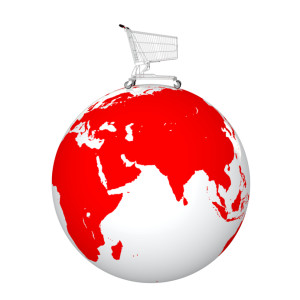Editor’s note: Bryan Pearson is president, LoyaltyOne at Alliance Data, Canada. This is an edited version of a post that was originally featured in Forbes and also appeared here under the title, “Expanding retail overseas: 3 lessons from Best Buy, Walmart and Home Depot.
So you want to sell in Eurasia? Just remember, planting a flag does not guarantee a market will grow.
 Just ask Best Buy, Home Depot, Walmart or Target. All of these major retailers tested the waters of international markets over recent years and retreated, having failed to appreciate the nuances of consumer preferences, whether they involved store sizes or price points.
Just ask Best Buy, Home Depot, Walmart or Target. All of these major retailers tested the waters of international markets over recent years and retreated, having failed to appreciate the nuances of consumer preferences, whether they involved store sizes or price points.
Yet U.S. retailers continue to leap borders. One in five global merchants that expanded overseas in 2015 was a U.S. company, according to the May 2016 retail report by CBRE Research, How Global Is the Business of Retail? Of the 51 countries those U.S. merchants targeted, most were in Europe and Asia.
There’s little doubt many of these merchants are learning the ropes along the way. The smarter ones take their pointers from the failures of others or the successes of seasoned global organizations.
Having traveled for retail research extensively in Europe and Asia, I’ve observed a few key factors that could benefit many retailers. The following are the top three, with examples.
Making it work means working local: Many merchants make the mistake of relying on U.S.-based management teams to oversee international expansions, and on domestic company data and models. Foreign markets have broadly different shopping patterns, however, and a tailored customer experience is not so easily imported. In South Korea, Walmart ignored (or failed to recognize) the local inclination to purchase smaller packages or the competitive power of established rivals. Its stores did not appeal to shoppers either – customers needed to use ladders to access the upper shelves of its higher-than-average racks, and the exposed pipes in the ceilings were a put-off.
Home Depot made a similar foundational error in China back in 2006 when it overlooked the fact that in such developing countries, doing it yourself is seen as a sign of poverty. The country’s aspirational consumers preferred to hire out such work, and Home Depot shuttered its last China stores in 2012, taking an after-tax charge of $160 million.
Alternatively, when Ikea expanded into China, it studied almost 8,300 people in eight cities just to capture their morning routines. Ikea used this research to create behavior-specific products, such as a self-standing mirror equipped with hooks for jewelry and clothing, which made preparation easier.
Don’t underestimate the value of price: Target really stepped in it when it entered Canada with product price points that were higher than those in the United States. Canadian shoppers, familiar with Target from visits to its domestic stores, noticed the disparity and shut their wallets. Walmart, meanwhile, was forced to raise its food prices in Germany back in 2003 after the country’s highest court ruled its low-cost pricing model undermined competition.
Hitting relevant price points requires more than price parity, however; it requires an in-depth understanding of a particular market’s household budget – and what that market is willing to pay for. Also note that what is priced as a steal in one market may be a fortune in another. An 11-ounce bottle of Coca-Cola will cost 22 percent more in France than Germany, for example, while a pair of Nike running shoes is about the same.
Know your products: Often companies retreat from new markets simply because they fail to understand merchandising basics. The products, formats and brands that excel in the United States, even major products such as Tide, may mean nothing to shoppers in foreign markets.
In 2011, the electronics chain Best Buy closed nine namesake stores in China after five years of misreading customer priorities there. Best Buy opened U.S.-style stores with U.S-type products, including espresso makers, while the Chinese preferred more practical items – more washing machines, fewer sound systems. “We were stupid and arrogant,” David Deno, Best Buy’s former Asia chief, told The Wall Street Journal in 2012. Similarly, Best Buy retreated from Europe in 2011 after customers eschewed its big box formats and TV advertising, which featured American accents.
One way retailers can attract positive consumer attention in new markets is by offering private-label or other products that are exclusive to that chain. However, before doing so retailers should be careful the market has an appetite for these products or services. Test and learn.
In the end, we may see more of what recently happened with Lowe’s expansion into Canada: The need to acquire a large local player to create scale, local knowledge and a platform on which to build a new best practice approach that blends the best of both worlds.
